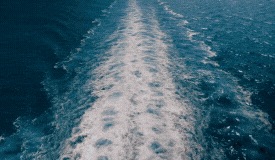Dutch Caribbean Islands:--- A 2018 study of mosquito populations on the islands of Sint Maarten, Saba, and Sint Eustatius documented eleven different species, including two new species for Sint Maarten, a number of which are known to spread mosquito-borne diseases. Understanding mosquito populations can help local governments prepare themselves against the spread of mosquito-borne diseases as well as provide insight into the health of local ecosystems.
Mosquitoes often considered a pest, can provide important information concerning the presence of certain diseases. In addition, mosquitoes provide important functions in several ecosystems, as a food source, and serving as water filters and plant pollinators and when studied can give researchers insight into the overall health of the ecosystem. The Leeward and Windward islands (excluding Trinidad and Tobago) are known to host over 70 different mosquito species; although not all are known to feed on human blood.
With an increase in international travel, along with a change in land use through urbanization, there have been significant changes within mosquito populations over the last few decades. This is especially true within the Caribbean, where an increase in human population has been coupled with an increase in major mosquito-borne disease outbreaks. Some examples of this were the 2014 outbreak of chikungunya and the 2016 outbreaks of Zika and dengue.
2018 Survey
A 2018 study surveyed the islands of Sint Eustatius, Saba and Sint Maarten, to better understand the local mosquito populations. This study was part of the Naturalis biodiversity study of 2018 and was the first of its kind since the surveys in 1947 by Edwin van der Kuyp and 1949 by Pieter Wagenaar
file:///C:/Users/bibi_/AppData/Local/Temp/msohtmlclip1/01/clip_image002.jpg" width="762" height="1090" />
Hummelinck. In addition to documenting specific species present, this study also provided a new key to
be used for species identification for both adults and larvae which will be helpful in future studies. The surveys were conducted between April and October of 2018 and included a one-week survey for each of the three islands during the dry season and a ten-day survey during the wet season for Sint Maarten and Saba. These surveys included setting ten trapping sites in a variety of urban, semi-urban and natural habitats. At each site, a combination of four different methods were used: two different mosquito traps, a net to catch free flying adults and an aquatic net, turkey baster and electric pipet to sample larvae.
Results
In all, a total of 871 adults were captured and adult and larvae specimens from eleven species were identified between the three islands; eight on Sint Maarten, six on Saba and two on Sint Eustatius. The two most common adults captured were the southern house mosquito, Culex quinquefasciatus (56 % of adults) and yellow fever mosquito, Aedes aegypti (35 % of adults). Of the eight species found on Sint Maarten two had never before been documented and are known to be potential disease carriers, the Florida SLE (Saint Louis encephalitis) mosquito, Culex nigripalpus, and black salt marsh mosquito, Aedes taeniorhynchus.
Shifting Mosquito Populations
Overall, this most recent study documented fewer retrieved species than previous studies, suggesting an overall loss of mosquito biodiversity within the mosquito populations. One species (Cx. habilitator), previously found on Sint Maarten was not retrieved from any of the islands during the 2018 survey. This species can be difficult to identify as the adult look very similar to Cx. bahamensis and the larvae appear similar to Cx. nigripalpus, so it is possible these were originally misidentified in the 1947. In addition, species typically found in areas with high human populations were found in abundance on Sint Maarten and Sint Eustatius, but were rare on Saba, highlighting the impact of habitat degradation and the
positive results of intensive vector control strategy on Saba, where on the other islands this is more
complicated.
There were also a series of interesting differences between the historical surveys and the survey conducted in 2018 between the islands of Saba and Sint Eustatius. Although these two islands are historically and geographically very similar, their mosquito populations had a few distinct differences. For example, ‘natural forest indicator’ species (Cx. bisulcatus and Ae. busckii) had been previously noted on both islands, but were only found on Saba in the 2018 survey. The differences between these islands could be the result of sampling limitations, loss of suitable habitat or variations in mosquito control approaches, but due to a lack of data no definite conclusions could be made.
Importance of Future Studies
Understanding local insect populations can provide insight into the health of the environment. For
example, shifts of populations towards those known to be ‘indicators of anthropogenic activity’ can
file:///C:/Users/bibi_/AppData/Local/Temp/msohtmlclip1/01/clip_image003.jpg" width="762" height="1090" />
show the impact of increased urbanization or degraded local natural habitat. Gaining an understanding for the biodiversity and population density of mosquitos can give researchers a clearer insight into the current natural state and help warn public officials of potential health concerns. More information and follow up studies are required to gain a more complete understanding of local mosquito populations.
Report your sightings
Please report any sightings or photos you have insects on https://dutchcaribbean.observation.org. This is a free website and app (iPhone (iObs) & Android (ObsMapp)) which allows local citizens to report sightings of plants and animals. These tools are available in over 40 languages and can be used by biologists and citizens and tourists alike. Species reports by local communities are invaluable for nature conservation efforts to help increase public awareness and overall species protection. Besides, Observation.org is working together with Naturalis Biodiversity Center on automated species identification software. Your uploaded photos are of great value to make this possible. For questions, please contact This email address is being protected from spambots. You need JavaScript enabled to view it.
Receive nature-news
Stay updated about nature research and monitoring projects in the Dutch Caribbean through the Dutch Caribbean Nature Alliance’s (DCNA) free digital newsletter “BioNews”. Sign-up here, it’s free: https://www.dcnanature.org/subscribe/












